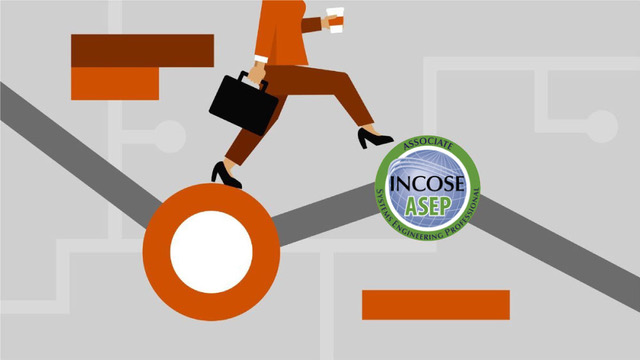By René King
We love to get feedback from SEPs about the path to their certification and the impact (if any) that it has had on their career. This month we hear from PPI/CTI’s own, René King about her journey and experience with certification.
Almost every time I talk to someone about getting SEP certified, one of the first questions I get asked is why should they consider getting certified. This has prompted me to reflect on the value that getting ASEP certification has benefitted me. My background is in mechanical engineering and I am very grateful for my education but after spending some months working as a junior system designer for Stëinmuller Bilfinger, I realized how inadequate my tertiary education training was in helping me address ‘real-world problems’ in a systematic way. Thankfully, I didn’t have to get burned too many times before I learned a structured approach to fully defining a problem and clearly outlining the measures of success that could guide me in developing an appropriate solution to address the problem, while minimizing risk to project outcomes and to the satisfaction of key stakeholders. Of course, I’m talking about SE!
Three years on and I haven’t looked back; I get to apply the principles and elements of SE to projects of various scales and applications as part of my work as a consultant and senior engineer for SE training provider, Project Performance International (PPI). However, it wasn’t until July 2019 at the INCOSE IS that I decided to take the examination and attempt to obtain my ASEP certification. Prior to July, I had referenced the INCOSE Systems Engineering Handbook (SEH) V4 at various times as part of my Master’s Degree studies and during my time with PPI when working on various projects. I knew little about the examination itself, only that it was tough and I knew I had to study the handbook quite intently if I was to pass. In preparing for the exam, I discovered just what high quality of work and vastness of content had gone into producing the Handbook. Whether someone has a little or a lot of experience in systems engineering, there is something for everyone to learn from the Handbook. Included in my IS registration was an opportunity to sit the certification exam for free so I opted in. The exam was tough – even harder than I expected it to be. Less than three weeks later, I was elated to receive an email from INCOSE stating that I had passed. I then completed a simple application (for ASEP specifically), paid the application fee and promptly got certified. Since then, I have been pleasantly surprised by some of benefits I have experienced.
I now have a much deeper appreciation for the wide scope of considerations to be taken into account in order to successfully deliver a project. Whatever we do in life, we instinctively pay attention to those areas of our responsibility on a project. The truth is that a clear view of the life cycle concerns in the organizational respects, management aspects and technical aspects is a necessity for every engineer – not just for the Chief Systems Engineer or Project Manager. Secondly, by familiarizing myself with the terminology in the handbook I am able to communicate better with my peers, confidently knowing that we speak the same language.
Since taking the exam I’ve had the pleasure of sitting in on two CTI ASEP/CSEP exam preparation courses in my role to evaluate the courses as part of continuous improvement. During these two courses, the content of the handbook was brought to life and I understood the material in context to engineering work much better. I came to the conclusion that although it is not essential for someone to attend a course in order to sit the exam, taking the course certainly helps to create a rich picture of the content. This is particularly indicative when understanding the detail of the IPO diagrams and the way that the various processes are related (anyone who has studied for the exam knows how challenging this can be).
Overall, I would recommend that every engineer considers getting at the very last ASEP certified and possibly CSEP or ESEP certified if they have more than 5 years or 20 years’ SE experience, respectively. If you are unsure where to start on your certification journey may I suggest that you register to take the examination, prepare adequately for it and then apply for ASEP certification when you pass the exam. Once you are ASEP certified, consider the path to becoming CSEP certified. If you wish, you may like to go straight to CSEP or ESEP certification depending on what suits you best, it is your path to shape. Own it!








